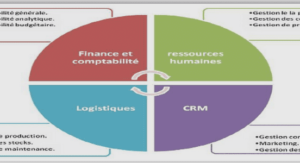Applicable approaches for the use of play production
According to Harmer (2001), “An approach describes how people acquire their knowledge of the language and makes statements about the conditions which will promote successful language learning.” Many groups of people have settled one after the others their theories on language learning through decades. They are applicable depending on the teacher, the learners, and the learning context … Here, we will present some applicable approaches when dealing with play production.
• The Natural Approach Belonging to the Natural Approach, the input hypothesis was proposed by Krashen (Du, 2009). The input hypothesis is the process of allowing learners comprehend and internalize the meaning of the script they are listening. This theory proposes that comprehension should go before production. For this theory, comprehensible input is strongly required because it helps the learners to understand well and internalize the meaning of the present words they are hearing long before they produce and use them in context. According to Krashen and Terrell, allowing such a delay of production will eases true language acquisition. Another hypothesis of the Natural Approach is the fact of reducing what Krashen calls the affective filter. Affective filters refer to anything that creates mental barrier to a language learner like boredom or any difficulty matters. Jazz Chant Fairy Tales contribute in the affective filter’s reduction because they enable students to produce the language without frustration thanks to the relaxed atmosphere and the comprehensible in-put they provide.
• The Audio-lingual Approach As its name indicates, the Audio-lingual Approach or the Aural-Oral Approach involves students in listening first and then speaking. It refers to the Behaviorist model of learning that uses Stimulus-Response-Reinforcement. It generally consists in exposing students to an aural model (stimulus) and guiding them to repeat the model (response). The repetition may take several times and can be accompanied with teacher’s intervention if mistakes occur. Once students respond correctly, the response can be reinforced by the teacher’s positive feedback (reinforcement). Jazz Chant Fairy Tales adapted into play productions can be used for the Audio-lingual approach. During the rehearsals, students can be motivated to repeat the chants over and over rather than repeating lists of lessons. The present approach helps students a lot in the internalization and mastery of the script and its performance.
• The Direct Approach and Total Physical Response (TPR) Both the Direct Approach and the Total Physical Response facilitate and quicken students’ understanding and acquisition of the target language. For the Direct Approach, teacher should associate meaning and the target language directly when students are facing new vocabulary. That is why, we demonstrate meaning through the use of realia, pictures, and pantomime … Translation therefore should not take place. The Direct Approach views language as primarily spoken not written. Pronunciation also receives attention right from the beginning of a course. (Freeman, 1986) The Direct approach is then applicable for the adaptation of Jazz Chant Fairy Tales into play productions, for students face new vocabulary items in the script. They speak the language through performances, and pronunciation is the learning focus for our topic. The Total Physical Response (TPR) makes the learners produce gestures related to the vocabulary. Asher believes that learning a foreign language can be conducted as the way children learn their native language. Teacher commands and students perform. Students then learn by doing. Teachers can teach and evaluate their students by using Direct Approach and Total Physical Response. These two approaches can be adapted for any level, especially with the beginners. These approaches are easy to use and quicken the process of both teaching and learning of Jazz Chant Fairy Tales’ script.
Jazz Chant Fairy Tales – materials which facilitate teachers’ tasks
Jazz Chant Fairy Tales ease the teaching of English. Jazz Chant Fairy Tales facilitate teachers’ work as their audio versions can replace well the teacher. They are even better than teachers if the latter are non-native speakers because Jazz Chant Fairy Tales expose students to native ones. Teachers do not have to talk all the time. Teachers just need to handle well their machine and can replay the Jazz Chant Fairy Tales as much as necessary without any other efforts. As asserted by Dawson (1984): “Their audio versions give teachers’ overworked voice a rest. They can be played many times giving exactly the same stress and intonation every time.” 11 Jazz Chant Fairy Tales do not require any expensive devices. Teachers do not have to possess computer or any other expensive materials for Jazz Chant Fairy Tales’ teaching. Nowadays, “radio cartes” and USB keys are affordable, easy to handle, and can be used in countryside where power cuts often occur. First of all, teachers need to go on the Internet and download Jazz Chant Fairy Tales. Their audio versions can be downloaded on http://www.myfreesongs.cc. The written ones can be obtained on “Scribd” if you have a mobile phone or a tablet with “Android”, or you can just listen to the audio versions and take down the lyrics. Once the downloading finished, we need to record the audio versions in a USB key. Then, we can plug it with a “radio carte” for the listening.
The written versions can be printed and duplicated for the students. Moreover, Jazz Chant Fairy Tales are wealthy materials which provide language elements and can be exploited for the development of students’ communicative skills. Teachers can take advantage of Jazz Chant Fairy Tales to teach language elements. We can exploit them to teach vocabulary items, language functions, structures and pronunciation, for example. Jazz Chant Fairy Tales also integrate listening, reading and speaking skills. That is to say, the audio versions can be adapted for listening activities. The printed versions can be used for reading. The repetition of the audio versions is for speaking. Therefore, teachers can develop students’ communicative skills through teaching Jazz Chant Fairy Tales. Last but not the least, Jazz Chant Fairy Tales do not require any musical ability. In fact, we do not need to be musical when learning Jazz Chant Fairy Tales. They are done for people who lack confidence in their singing because they are like songs without a singing melody. If we chant them without the jazz rhythm, we sound like people speaking natural English. So, there is no reason to worry about adapting them in classrooms or clubs. We should not then be sceptical towards the use of songs and chants in classrooms or clubs, for it can be useful for the teaching of English. Teaching English through Jazz Chant Fairy Tales facilitate teachers’ tasks as they are ready-made and available materials on the Internet. They help at the teaching of language elements and communicative skills. We can listen to them by using non-expensive devices, such as “radio cartes” and USB keys. We do not need to be good at singing when using them. All of these are the advantages of using Jazz Chant Fairy Tales for teachers.
Impacts on listening and on loud reading While communicating, misunderstanding may occur to students who have not enough listening practice at school. One of the existing reasons is their unfamiliarity to the sound of English words. In English, we do not pronounce words as they are spelt. So, if they only know how to spell words, they will not recognize the same word uttered by a good English speaker. That is why they need to listen to correct pronunciation of English words if they are to communicate efficiently. Regarding the learning of rhythm, students can learn it thanks to the jazz rhythm that Jazz Chant Fairy Tales provide. Let us consider the learning to ride a bicycle as a metaphor. When children learn to ride a bike, they cannot ride it right away but they need the supports (two little wheels) at the back in order to keep them in balance. Once they are used to riding bike with those supports, learning to ride it without them will not be a great deal anymore. Likewise in the process of listening, the jazz rhythm in Jazz Chant Fairy Tales is the support which helps the students to learn the natural spoken English. Once they are used to and internalize how stresstimed the English language is then, they are ready to listen to and understand natural spoken English. As RANDRIANASOLO (1996) affirms in her CAPEN dissertation: “If a listener knows about English stress patterns (s)he would easily understand what (s)he has heard.” Learning rhythm through Jazz Chant Fairy Tales impacts on students’ loud reading as well.
The impact on loud reading is quite the same as that of listening. Students should not only know how to spell words or how to write sentences correctly, but they need to be able to read with the right pronunciation. Reading with the appropriate rhythm contributes in students’ understanding of a reading passage. Teacher can evaluate students’ understanding of a text through the manner they read it. For example, their emphasis on the important words shows how well they understand it. Jazz Chant Fairy Tales are appropriate tools for the improvement of students’ loud reading because they can imitate the audio versions when they are reading the script. The Jazz Chant Fairy Tales can also be adapted as listening and reading activities. Listening and reading activities help teachers in checking students’ understanding of the passages. That is to say, students will be involved in listening or reading comprehension by means of questions in order to verify their understanding. Teachers can combine the listening and reading of the script. Another alternative is just adapting it as a listening or just a reading activity depending on the level of the group. Teachers, however, need to prepare in advance the steps which should be exploited in order to facilitate the learners’ tasks in the activities.
ACKNOWLEDGEMENT |




